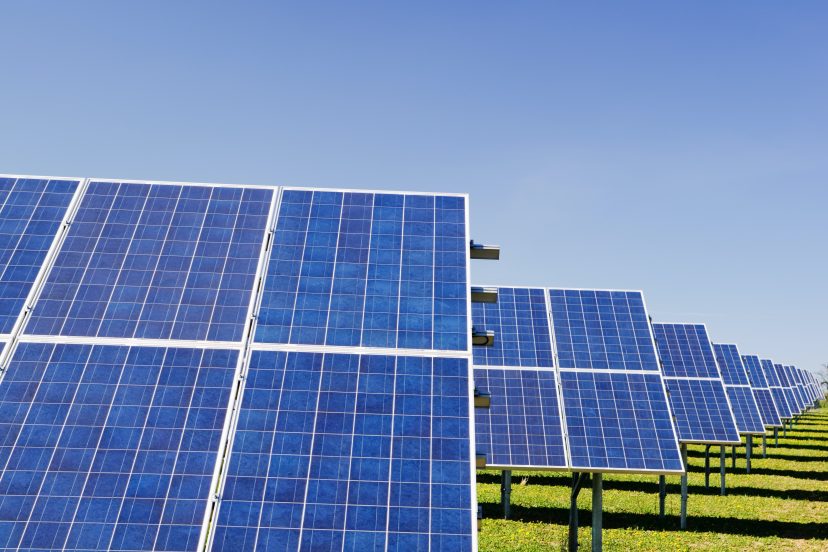How Is Solar Energy Stored
As an Amazon Associate, I earn from qualifying purchases, at no additional cost to you. Disclaimer
I’ve always been fascinated by the incredible power of the sun and its ability to provide us with clean and sustainable energy. Lately, I’ve been wondering: how exactly is solar energy stored? It turns out, this question has a fascinating answer, and in this article, I’ll explore the various methods and technologies used to store the abundant energy harnessed from the sun. From advanced batteries to thermal storage systems, join me on this enlightening journey as we unveil the secrets behind solar energy storage.
Understanding Solar Energy
Solar energy is a renewable form of energy that is derived from the sun. It is a clean and abundant source of power that has the potential to revolutionize the way we generate electricity. In order to harness and utilize solar energy effectively, it is important to understand the various processes involved in its conversion, as well as the benefits and drawbacks associated with its use.
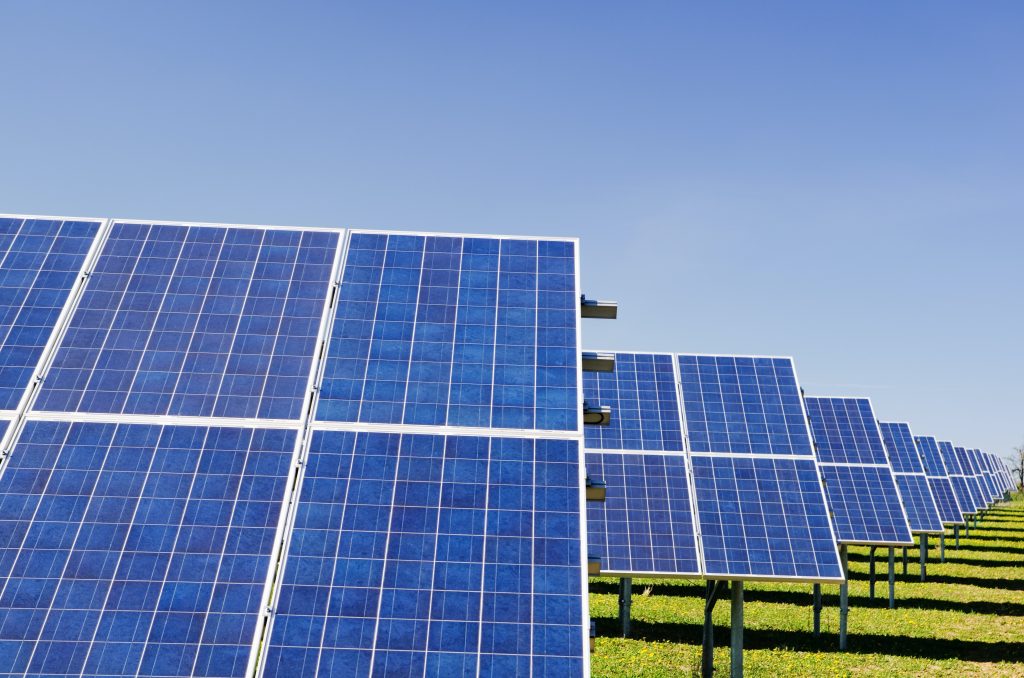
What is Solar Energy
Solar energy is the radiant light and heat that is emitted by the sun. It is a form of renewable energy that can be converted into usable power through various methods. The primary source of solar energy is the sun, which emits massive amounts of energy in the form of electromagnetic radiation. This energy can be collected and utilized in numerous ways to generate electricity and provide heating and cooling for homes and buildings.
Solar Energy Conversion Processes
There are several processes involved in the conversion of solar energy into usable power. The most common method is the use of solar panels, also known as photovoltaic (PV) panels, which convert sunlight directly into electricity through the photovoltaic effect. Another method is solar thermal energy, which involves harnessing the sun’s heat to produce electricity or to heat water for residential and commercial use. Concentrated solar power systems are also used to generate electricity by focusing the sun’s energy onto a small area to create steam, which then drives a turbine to produce power.
Benefits and Drawbacks of Solar Energy
solar energy offers a wide range of benefits that make it an attractive option for power generation. Firstly, it is a clean and renewable source of energy that does not produce any harmful emissions or pollution. This makes solar energy environmentally friendly and reduces our dependence on fossil fuels. Additionally, solar energy can help to reduce electricity bills, as it can offset or even eliminate the need to purchase electricity from the grid. Solar energy also provides energy independence, as it can be generated and used on-site without relying on external sources.
However, there are also some drawbacks to solar energy. Firstly, solar panels and other components required for solar energy systems can be expensive to purchase and install. This initial investment can be a barrier for some individuals or businesses looking to adopt solar energy. Additionally, solar energy generation is largely dependent on sunlight, which means that it may not be as reliable in areas with less sunlight or during cloudy days. Solar energy also requires ample space for the installation of solar panels, which may be a limiting factor for some locations.
Key Components in Solar Energy Storage
Solar energy storage is an essential aspect of utilizing solar power effectively. It allows for the capture and storage of excess energy generated by solar panels during the day, which can then be used during periods of low or no sunlight. There are several key components involved in solar energy storage, each playing a crucial role in the process.
Solar Panels
solar panels are the primary component that captures sunlight and converts it into electricity. They are made up of multiple solar cells, which are typically made from silicon and generate electricity when exposed to sunlight. When sunlight hits the solar panels, the photons in the light excite the electrons in the solar cells, causing them to move and create an electric current. This current is then captured and can be used to power electrical appliances or charge batteries for later use.
Charge Controllers
Charge controllers, also known as charge regulators, are devices that regulate the flow of electricity between the solar panels and the batteries. They prevent overcharging of the batteries by regulating the voltage and current produced by the solar panels. Charge controllers also protect the batteries from damage caused by over-discharging, ensuring that they have a longer lifespan.
Batteries for Energy Storage
Batteries are crucial for storing excess energy generated by solar panels. They store the electricity produced by the solar panels during the day, allowing it to be used during periods of low or no sunlight. Solar batteries come in various types, such as lead-acid batteries, lithium-ion batteries, and saltwater batteries. Each type has its own advantages and disadvantages, including differences in cost, efficiency, and lifespan.
Inverters
Inverters are devices used to convert the direct current (DC) electricity generated by the solar panels into alternating current (AC) electricity that is used in most electrical appliances and the power grid. Inverters play a crucial role in solar energy systems, as they enable the use of solar power in homes and buildings. They also ensure that the electricity produced by the solar panels is compatible with the electrical grid, allowing excess energy to be fed back into the grid for credit or compensation.
Solar Energy Storage Systems
Solar energy storage systems are used to store and utilize the energy generated by solar panels during periods of low or no sunlight. These systems enable the efficient use of solar energy, ensuring a consistent and reliable power supply. There are various types of solar energy storage systems, each with its own advantages and drawbacks.
Direct Storage Systems
Direct storage systems are the most common type of solar energy storage system. In these systems, the excess electricity generated by the solar panels during the day is directly stored in batteries for later use. When sunlight is limited or unavailable, the stored energy can be used to power electrical appliances or provide electricity to the grid. Direct storage systems are efficient and reliable, as they provide a direct source of stored energy that can be accessed whenever needed.
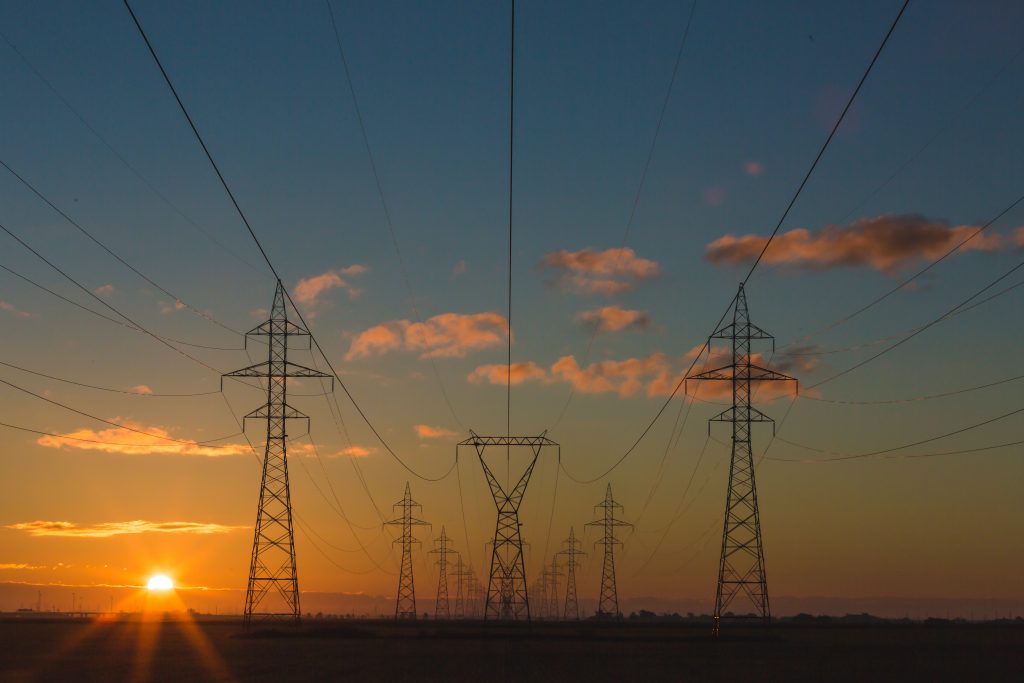
Indirect Storage Systems
Indirect storage systems utilize alternative methods to store excess solar energy. These systems convert the electricity produced by the solar panels into other forms of energy, such as hydrogen or thermal energy. The stored energy can then be used to generate electricity or provide heating and cooling as needed. Indirect storage systems are flexible and allow for the storage of large amounts of energy, but they may involve additional conversion steps and have lower overall efficiency.
Thermal Storage Systems
Thermal storage systems store excess solar energy in the form of heat. In these systems, solar thermal collectors capture the sun’s heat and store it in a medium such as water, molten salt, or rocks. The stored heat can then be used to generate electricity or provide heating and cooling. Thermal storage systems have the advantage of high energy storage capacity and can provide continuous power, even during periods of low or no sunlight. However, they require specialized equipment and infrastructure, making them more complex and expensive compared to other storage systems.
How Solar Batteries Work
Solar batteries are an essential component of solar energy storage systems. They store excess electricity generated by solar panels during periods of high sunlight, allowing it to be used during periods of low or no sunlight. Understanding how solar batteries work is crucial for maximizing the efficiency and effectiveness of solar energy storage systems.
Function of Solar Batteries
Solar batteries function by storing the excess electricity produced by solar panels and releasing it when needed. When the solar panels generate more electricity than is currently being used, the excess power is directed into the batteries for storage. The batteries convert and store the electricity as chemical energy. When electricity is needed but solar panels are not generating enough power, the batteries release the stored energy, effectively maintaining a steady supply of power.
Types of Solar Batteries
There are several types of solar batteries commonly used in solar energy storage systems. Lead-acid batteries are one of the oldest and most commonly used types. They are reliable and relatively inexpensive, but have a shorter lifespan and lower energy density compared to other types. Lithium-ion batteries are another popular choice for solar energy storage. They have a higher energy density, longer lifespan, and faster charging times compared to lead-acid batteries, but they tend to be more expensive. Additionally, saltwater batteries and flow batteries are gaining popularity due to their longer lifespan and environmental friendliness.

Efficiency and Life of Solar Batteries
The efficiency and lifespan of solar batteries are crucial factors to consider when choosing a storage system. The efficiency of a solar battery refers to how much of the energy stored is discharged when needed. Higher efficiency batteries will provide more usable energy. The life of a solar battery refers to the number of charge-discharge cycles it can undergo before its capacity starts to degrade significantly. Longer life batteries will require less frequent replacements, resulting in lower long-term costs. It is important to consider the specific needs and requirements of a solar energy system to determine the most suitable type of solar battery to use.
Solar Energy Storage with Pumped-Storage Hydroelectricity
Pumped-storage hydroelectricity is a method of energy storage that utilizes the power of water to store and release energy. When combined with solar energy, it provides a reliable and efficient storage solution for storing excess solar energy.
Introduction to Pumped-Storage Hydroelectricity
Pumped-storage hydroelectricity works by using gravitational potential energy to store and release energy. It involves two reservoirs, one located at a higher elevation and the other at a lower elevation. When excess electricity is available, it is used to pump water from the lower reservoir to the higher reservoir, effectively storing the energy in the form of gravitational potential energy. When electricity is needed, water is released from the higher reservoir to the lower reservoir, flowing through turbines to generate electricity. This process allows for efficient energy storage and on-demand electricity generation.
Solar and Pumped-Storage Hydroelectricity
Solar energy can be combined with pumped-storage hydroelectricity to create an efficient and reliable energy storage system. Excess electricity generated by solar panels during the day can be used to pump water from the lower reservoir to the higher reservoir, effectively storing the energy for later use. When sunlight is limited or unavailable, the stored water can be released to flow through turbines and generate electricity. This integration of solar energy and pumped-storage hydroelectricity allows for a continuous and reliable power supply, even during periods of low solar generation.
Pros and Cons of Pumped-Storage Hydroelectricity
Pumped-storage hydroelectricity offers several advantages as a method of energy storage. It has a high energy storage capacity, allowing for large amounts of energy to be stored and released as needed. It also has high efficiency, as the energy losses during storage and conversion are relatively low. Pumped-storage hydroelectricity is also considered a flexible and reliable storage solution, providing continuous power even during periods of low solar generation.
However, there are also some drawbacks to pumped-storage hydroelectricity. It requires specific geographical conditions, including the availability of two reservoirs at different elevations. This limits its applicability to certain locations. Additionally, the construction and maintenance of pumped-storage hydroelectricity systems can be expensive. The environmental impact of constructing reservoirs and the potential disruption to aquatic ecosystems should also be considered.
Thermal Storage: An Alternative Energy Storage
In addition to battery storage and pumped-storage hydroelectricity, thermal storage offers an alternative method for storing excess solar energy. By converting solar energy into heat and storing it, thermal storage systems can provide a reliable source of energy for heating, cooling, and electricity generation.
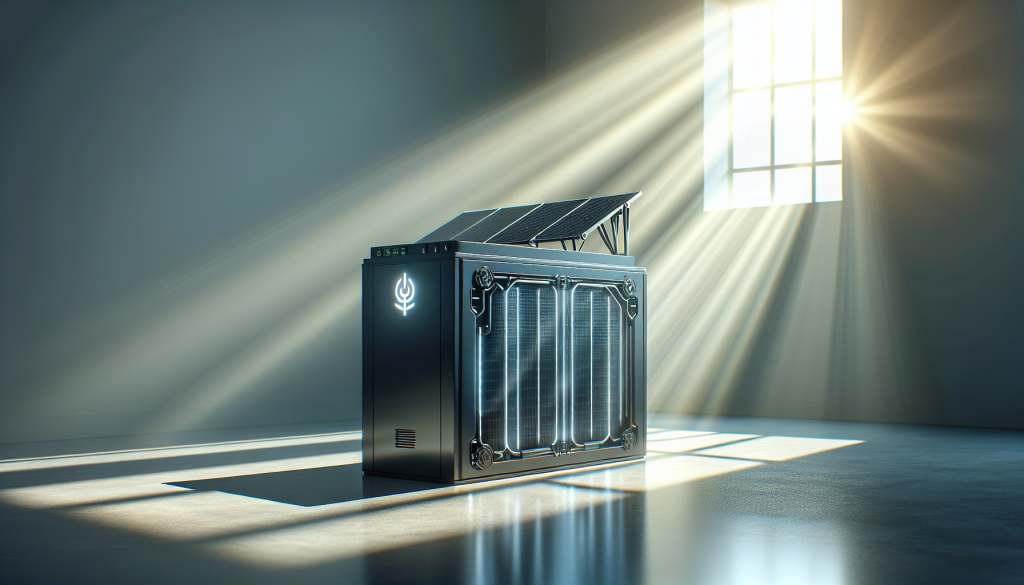
The Process of Thermal Storage
Thermal storage systems work by collecting solar energy and converting it into heat. This heat can then be stored in various forms, such as water, molten salt, or rocks. The stored heat can be used directly for heating applications or used to generate electricity through steam turbines. The process of thermal storage involves capturing solar radiation through solar collectors, transferring the heat to a storage medium, and releasing it as needed.
Types of Thermal Storage
There are different types of thermal storage systems, each utilizing different storage mediums. One commonly used medium is water, which can be heated and stored in insulated tanks. Another option is molten salt storage, in which the salt is heated to a high temperature and stored in insulated tanks. Salt has the advantage of being able to store heat for longer periods without significant energy loss. Rocks are also used as a storage medium, as they can retain heat for extended periods. The choice of storage medium depends on factors such as energy requirements, space availability, and temperature requirements.
Benefits and Limitations of Thermal Storage
Thermal storage offers several benefits as an energy storage solution. It allows for the storage of large amounts of energy for extended periods, providing a reliable and consistent power supply. Thermal storage can be used for various applications, including space heating, water heating, and electricity generation. It is also environmentally friendly, as it utilizes renewable energy and produces minimal emissions.
However, there are also limitations to thermal storage. It requires specialized equipment and infrastructure, which can be costly to install and maintain. The efficiency of thermal storage systems can also vary depending on factors such as insulation, heat loss, and the specific storage medium used. Additionally, thermal storage systems may have a larger physical footprint compared to other storage methods, requiring ample space for installation.
New Technologies in Solar Energy Storage
As technology continues to advance, new and innovative solutions for solar energy storage are emerging. These technologies aim to improve the efficiency, capacity, and sustainability of solar energy storage systems, further enhancing the viability of solar power as a renewable energy source.
Solar Power Towers
Solar power towers are a type of concentrated solar power system that utilizes a large field of mirrors to focus sunlight onto a central receiver at the top of a tower. The receiver absorbs the concentrated sunlight and converts it into high-temperature thermal energy. This thermal energy can then be stored and used to generate electricity when needed. Solar power towers offer the advantage of high efficiency and the ability to store large amounts of energy. They also have the potential for extended operation due to their thermal storage capabilities.
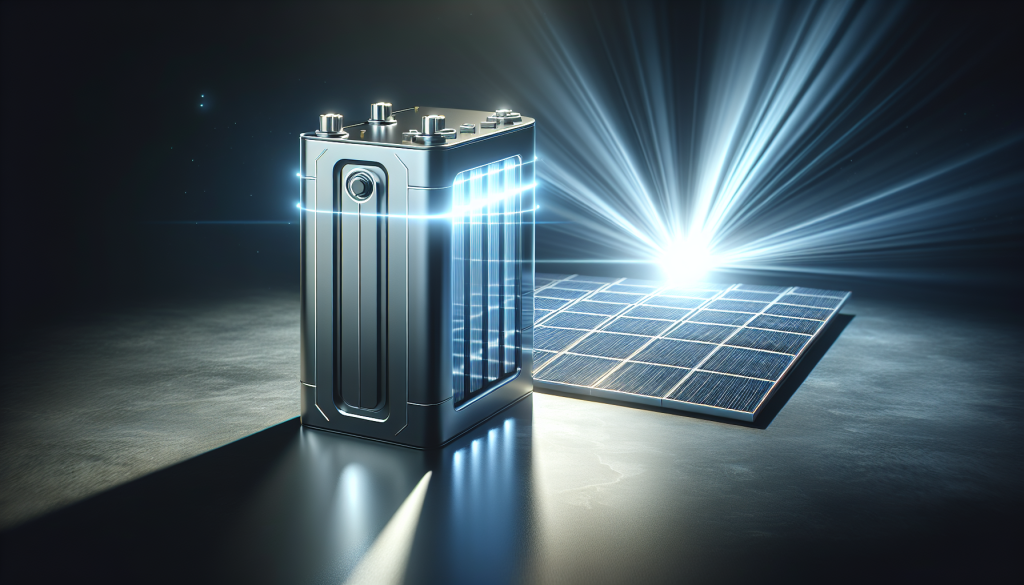
Molten Salt Energy Storage
Molten salt energy storage is a type of thermal storage system that utilizes molten salt as the storage medium. The salt is heated using solar energy and stored in insulated tanks. The stored heat can then be used to generate electricity using steam turbines. Molten salt storage has the advantage of being able to store heat for extended periods without significant energy loss. It is also considered a safe and environmentally friendly storage solution, as salts are non-toxic and pose minimal risks.
Hydrogen Energy Storage
Hydrogen energy storage involves the production and storage of hydrogen gas using excess electricity generated by solar panels. The hydrogen gas can be stored in tanks or underground reservoirs and used as a fuel source when needed. Hydrogen has the advantage of being a high-energy-density fuel that can be used for various applications, including electricity generation, heating, and transportation. However, hydrogen storage and infrastructure can be costly and require specialized equipment.
Superconducting Magnetic Energy Storage
Superconducting magnetic energy storage (SMES) utilizes superconducting materials to store electrical energy in a magnetic field. In SMES systems, excess electricity is used to generate a strong magnetic field in a superconducting coil. The magnetic field is then maintained without loss for extended periods. When electricity is needed, the stored magnetic energy is converted back into electrical energy. SMES offers high efficiency, rapid response times, and long durations of energy storage. However, the superconducting materials used can be expensive and require low temperatures to function effectively.
Maintenance and Efficiency of Solar Storage Systems
To ensure the long-term performance and efficiency of solar storage systems, regular maintenance and monitoring are essential. Proper maintenance practices can help to maximize the lifespan and effectiveness of the system, ensuring a reliable and consistent power supply.
Maintaining Solar Storage Systems
Maintenance of solar storage systems involves several key aspects. Regular inspections of solar panels and other components should be conducted to check for any damage or wear. Cleaning the solar panels to remove dirt, dust, and debris is important to optimize their efficiency. The batteries should be monitored and tested periodically to ensure they are functioning properly. Charge controllers and inverters should also be checked for any issues or malfunctions. Additionally, maintaining proper insulation and weatherproofing of all components is crucial to protect them from external elements.
Improving Efficiency of Solar Storage Systems
There are several methods that can be employed to improve the efficiency of solar storage systems. One approach is to optimize the placement and orientation of solar panels to maximize sunlight exposure. This can be achieved through proper site selection and utilizing tracking systems that follow the movement of the sun. Additionally, using high-efficiency solar panels and inverters can increase the overall system efficiency. Efficient energy management and monitoring systems can also help to ensure that the stored energy is used effectively and efficiently.
Signs of Deterioration in Solar Storage Systems
It is important to be aware of signs that may indicate deterioration or issues with solar storage systems. Rapid or excessive battery discharge, reduced electricity production, or frequent system malfunctions may indicate problems with the batteries or other components. Physical damage to solar panels, such as cracks or discoloration, should also be addressed promptly. Any abnormal odors, sounds, or visual indicators of overheating or electrical issues should be investigated and resolved immediately. Regular monitoring and maintenance can help to identify and address these issues before they become more serious or result in system failures.
Cost and Economics of Solar Energy Storage
The cost and economics of solar energy storage play a significant role in determining the feasibility and viability of implementing solar storage systems. Understanding the pricing structure, financial incentives, and return on investment is crucial for making informed decisions regarding solar energy storage.
Pricing Structure of Solar Storage Systems
The pricing structure of solar storage systems can vary depending on several factors, including the size of the system, the type of solar batteries used, and installation costs. The cost of solar panels and batteries has been decreasing over the years, making solar energy storage more affordable. However, it is important to consider the additional costs associated with installation, maintenance, and any necessary upgrades or replacements. Obtaining quotes and conducting cost-benefit analyses can help determine the most cost-effective options for solar energy storage.
Financial Incentives and Subsidies
Financial incentives and subsidies can significantly reduce the cost of solar energy storage systems. Many governments and organizations offer various programs and initiatives to promote the adoption of renewable energy, including solar power. These incentives can include tax credits, grants, rebates, and low-interest loans. It is important to research and take advantage of these financial incentives to offset the initial investment and improve the overall affordability of solar storage systems.
Return on Investment with Solar Storage Systems
Calculating the return on investment (ROI) is an important factor in determining the financial benefits of solar energy storage systems. ROI measures the profitability of an investment by comparing the gains or savings against the initial cost. The ROI of solar storage systems can be influenced by factors such as the cost of electricity from the grid, the amount of electricity generated and stored, and the lifespan and efficiency of the system. Conducting a thorough cost-benefit analysis and considering the long-term benefits and savings can help determine the economic viability of solar energy storage.
The Future of Solar Energy Storage
As technology continues to advance and the demand for renewable energy solutions grows, the future of solar energy storage looks promising. The development and implementation of new technologies, along with supportive policies and legislation, will play a crucial role in realizing a 100% solar-powered world.
Emerging Technologies in Solar Energy Storage
Emerging technologies are constantly being developed to improve the efficiency, capacity, and sustainability of solar energy storage systems. Advances in battery technology, such as the development of solid-state batteries or flow batteries, have the potential to revolutionize solar energy storage. Research and development efforts are also focused on improving the efficiency and durability of solar panels and inverters. Furthermore, innovative storage solutions, such as utilizing organic materials or nanotechnology, are being explored to enhance the performance and cost-effectiveness of solar energy storage.
Realizing a 100% Solar-Powered World
The transition to a 100% solar-powered world requires a comprehensive approach that encompasses various aspects, including technology, infrastructure, and policies. Continued advancements in solar energy storage technologies will be essential to provide reliable and consistent power, especially during periods of low or no sunlight. The integration of solar energy storage with other renewable energy sources, such as wind or hydroelectric power, can help to achieve a sustainable and decentralized energy system. Additionally, the development of smart grid systems and energy management technologies will enable efficient distribution and utilization of solar energy on a large scale.
Role of Policy and Legislation in Solar Energy Storage
Policies and legislation play a critical role in promoting the adoption and implementation of solar energy storage systems. Governments around the world are increasingly recognizing the importance of renewable energy and are implementing supportive policies to accelerate the transition towards a greener and more sustainable future. Incentive programs, feed-in tariffs, and net metering policies provide financial support and encourage the integration of solar energy storage. Regulations and standards also ensure the safety, quality, and interoperability of solar storage systems. Collaborative efforts between governments, industries, and research institutions will be necessary to establish a supportive policy framework and facilitate the widespread adoption of solar energy storage.
In conclusion, solar energy storage is a vital component of harnessing and utilizing solar power effectively. The key components of solar energy storage systems, such as solar panels, batteries, charge controllers, and inverters, play crucial roles in capturing, storing, and utilizing excess solar energy. Various storage methods, including direct and indirect storage systems, thermal storage, and pumped-storage hydroelectricity, offer flexible and efficient solutions for storing and releasing energy. The advancements in emerging technologies, such as solar power towers, molten salt energy storage, hydrogen energy storage, and superconducting magnetic energy storage, hold immense potential for enhancing the efficiency and capacity of solar energy storage systems. Maintenance, efficiency optimization, and proper monitoring are essential for maximizing the performance and lifespan of solar storage systems. The cost and economics of solar energy storage, including the pricing structure, financial incentives, and return on investment, are important considerations for evaluating the financial viability of solar storage systems. The future of solar energy storage lies in continued technological advancements, the realization of a 100% solar-powered world, and supportive policies and legislation. With the collective efforts of individuals, businesses, and governments, solar energy storage can contribute significantly to a cleaner, sustainable, and more resilient energy future.

